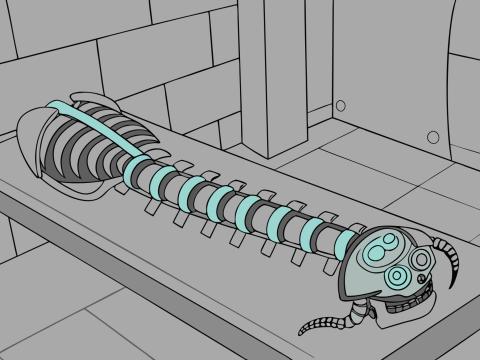Q&A With Casey Perley
In May, Casey Perley became director of the Army Applications Laboratory (AAL), which is designed to escort technologies across the Valley of Death.
What are your priorities?
To get the best technology in the hands of soldiers, I need to find companies not necessarily working with us. So, one of our priorities is always breaking down the barriers to access that nontraditional companies, of any size, face in working with the Department of Defense.
Second, we work with these companies to develop a min-viable product. We do that through soldier-integrated design work, and that will continue to be true. We also are always looking to evolve how the Army does business. What better business practices that we discovered can we then export?
And then lastly, how we orient multiple types of money on a problem. How do we leverage Small Business Innovation Research; RDT&E [research, development, testing and engineering]; and innovation funds that are housed in an Office of Secretary of Defense level all together on problems?
What are some early lessons learned?
We’ve done this amazing contracting sprint. We’ve put 15 companies on contract, within 30 days of solicitation closed. Some were on contract within nine or 10 days. It was incredible. But we realized it was still going take a month from the time that contracts period of performance started so they could invoice for that first payment, probably a week to two weeks after that before the money got there. And by then, a lot of these companies would have had to pay engineers on their payroll to work on this project, and the money hadn’t arrived.
We now work really diligently with our [contracting officers] to think through if there’s travel on this contract, or if companies may need to bring on additional technical support, or purchase capital equipment early on. Is there a way to frontload some of the payment so we’re minimizing the amount of money that companies have to pay out of pocket?
Do you expect to make any changes?
One of the great things about being located in Capital Factory in Austin is that the Defense Department innovation community is all here at work, and we really want to crack some of the co-investing codes. It’s pretty easy if I have some RDT&E money. It’s a little bit harder if multiple people have Small Business Innovation Research [SBIR] funds and working through the bureaucratic processes. All the services figuring out how to code back on SBIR projects is something that we’re all working on right now, and I hope we crack the nut on that becoming a good business practice, not just for the Army, but for all the services and governmental agencies.
What is the emerging opportunities focus area?
We keep that emerging opportunities bucket around for two reasons.
One, sometimes we will discover a technology that could change the face of warfare by virtue of its existence. We want to give ourselves the space to go after those truley disruptive technologies, even if it doesn't fit in the areas we tend to be working in.
Second, a lot of times in government and commercial companies, you plan for failure. You make all sorts of contingency plans on what happens if [something] doesn’t work.
We actually plan for success. Having an emerging opportunities bucket allows us to rapidly double down and even further accelerate technologies that are exceeding their technical milestones, and that Army stakeholders are even more interested in [later] than on day one when we started.
Have you identified any technologies that will change the face of warfare?
We haven’t discovered the next hypersonics or the next quantum or the next big thing in that regard. We definitely have some companies and projects in our portfolio that are going to significantly impact the Army, specifically on the logistics side of the house.





Comments